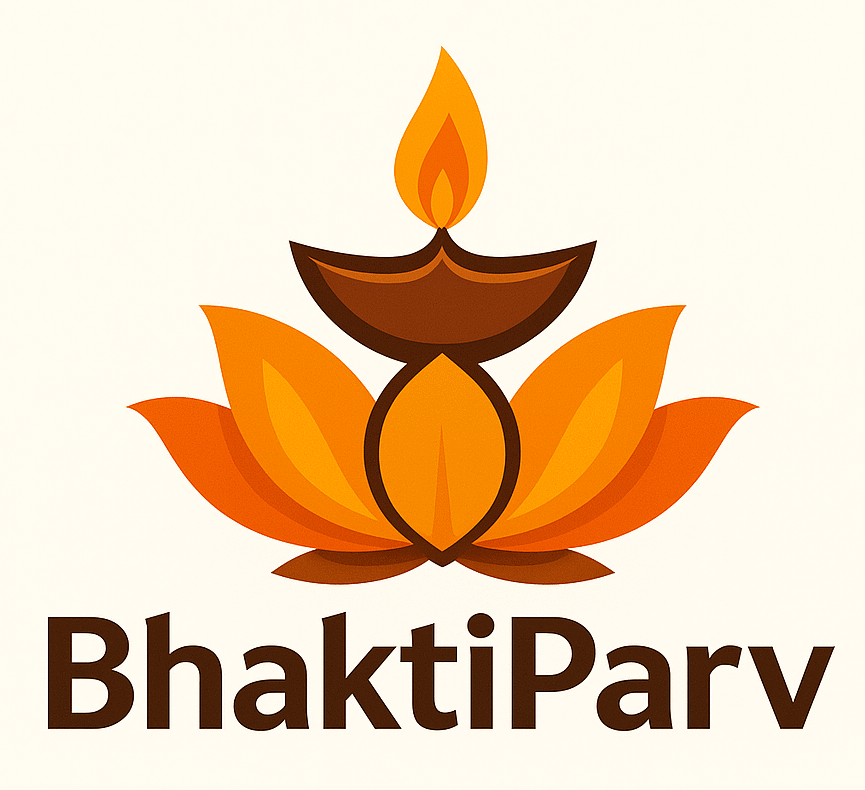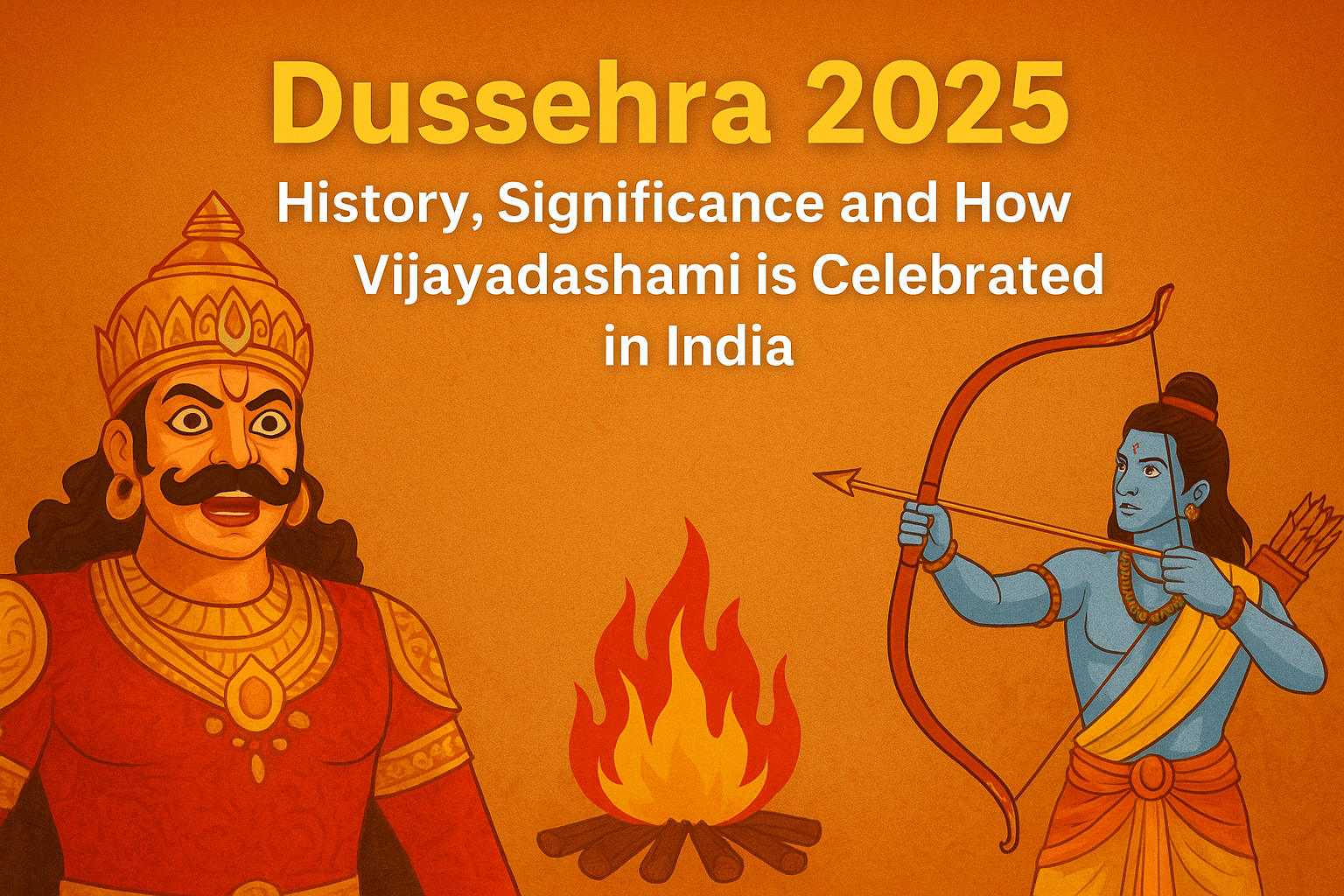Dussehra, also called Vijayadashami, is one of the most sacred and widely celebrated festivals in India. Falling on the tenth day of the bright fortnight (Shukla Paksha) of the Ashwin month, this festival comes immediately after the nine days of Navratri. It is a festival that reminds us of the eternal truth – good always triumphs over evil.
Historical Background of Dussehra
There are two major stories that highlight the importance of Dussehra:
1. Victory of Lord Rama over Ravana
According to the great epic Ramayana, this day marks the triumph of Lord Rama over the demon king Ravana. Ravana had abducted Mata Sita, and after a fierce battle in Lanka, Shri Ram defeated him with the blessings of Goddess Durga. This victory is celebrated as Dussehra, where effigies of Ravana are burnt to symbolize the end of arrogance, ego, and evil.
2. Victory of Goddess Durga over Mahishasura
Another story is related to Goddess Durga. She fought a battle against the powerful demon Mahishasura for nine days. On the tenth day, she killed him, thus restoring peace and dharma. This is why the tenth day of Navratri is also called Vijayadashami, meaning the day of victory.
Spiritual Significance of Dussehra
- Dussehra conveys that truth and righteousness will always prevail over evil and falsehood.
- The burning of Ravana is not only symbolic of destroying external evils, but also an inner reminder to burn our negative qualities like anger, greed, jealousy, ego, and pride.
- It is also considered one of the most auspicious days to begin new ventures, education, or business as it is believed that success follows actions started on Vijayadashami.
How Dussehra is Celebrated Across India
- Ramlila Performances – In North India, Ramlila (dramatic storytelling of Ramayana) is staged for several days, culminating with the grand battle of Rama and Ravana.
- Burning of Effigies – Large effigies of Ravana, Meghnath, and Kumbhakarna are set on fire with crackers, showing the destruction of evil.
- Durga Visarjan – In Bengal, Assam, Odisha and eastern states, Dussehra coincides with the immersion of Durga idols, marking the conclusion of Durga Puja.
- Shastra Puja – In Maharashtra and South India, people worship their tools, weapons, and vehicles, thanking Goddess Shakti for protection and strength.
- Exchange of Apta Leaves – In Maharashtra, families exchange leaves of the Apta tree, believed to be as valuable as gold, as a symbol of prosperity and goodwill.
Inner Message of Dussehra
Ravana’s ten heads represent ten human weaknesses – ego, anger, greed, lust, attachment, arrogance, jealousy, selfishness, injustice, and cruelty. The burning of Ravana is therefore a reminder to conquer these inner demons.
The true spirit of Dussehra lies not just in external celebrations, but in cleansing our hearts, adopting good deeds, and living a life based on dharma (righteousness).
Conclusion
Dussehra or Vijayadashami is much more than a festival – it is a lesson of life. It inspires us to believe that no matter how strong evil seems, it will always be destroyed by truth and goodness. On this day, let us all resolve to eliminate negativity from our lives and embrace positivity, courage, and devotion.
Happy Dussehra 2025! 🌸
May this festival bring light, joy, and prosperity to you and your family.

